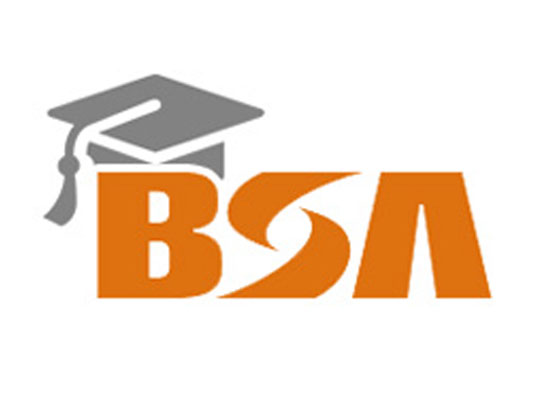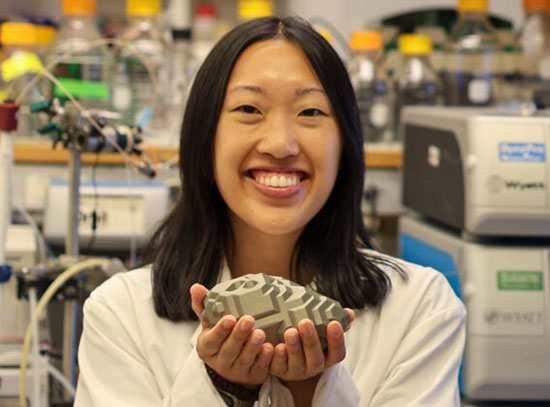Symbiotic Fungi Liberate Iron from Soil Organic Matter and Share with Plants
June 18, 2025
 enlarge
enlarge
Element-specific SXRF images of calcium (Ca), copper(Cu), Fe(iron), and zinc (Zn) in cross-section of EMFpine root (+Fe/+OM) providing quantitative cell-by-cell nutrient abundances and localization patterns at the plant-microbe interface.
The Science
Researchers discovered ectomycorrhizal fungi (EMF) liberate more Fe — a limiting nutrient — from soil in the absence of salt fertilizer and in the presence of natural organic matter (OM).
The Impact
Study adds key details to scientists' understanding of how EMF scavenge nutrients for plant hosts in marginal soils.
Summary
Ectomycorrhizal fungi (EMF) play a critical role in the processes by which trees and other woody plants take up nutrients, such as iron, calcium, and nitrogen, from the soil. This happens as part of a symbiotic relationship, where the fungi receive carbon sources derived from plant photosynthesis.
EMF may also participate in the breakdown of soil organic matter into smaller organic molecules and plant-available nutrients, which are then mined by the EMF themselves via their long branch-like "hyphae." But a comprehensive understanding of the decomposition abilities of EMF is still lacking, mainly due to the lack of direct field evidence.
In this study, researchers set out to find such evidence, particularly with respect to the role of EMF in the processing and availability of iron (Fe), a nutrient with limited bioavailability to plants due to its low solubility in soils. This information is key to understanding how EMF contribute to plant Fe uptake. The group was specifically interested in the role of inorganic nitrogen (N), which is N found in sources other than biomolecules such as proteins and amino acids. It is known that inorganic N availability is a critical factor that shapes EMF communities, how they interact with host plants, and how efficiently they can acquire Fe. But the specific impacts are largely unknown.
To uncover some of these details, the group studied loblolly pine samples that were inoculated with a fungal species and then subjected to various environments of Fe-coated sand and/or organic matter, as well as different amounts of a nitrogen-based fertilizer. They proposed that adding organic matter to their samples would promote the uptake of Fe and other nutrients by the fungi while inorganic N would counteract these effects.
Two months after inoculation, the researchers examined cross sections of the plant root samples with synchrotron X-ray microfluorescence imaging (SXRF), performed at the X-ray Fluorescence Microprobe (XFM) beamline at the National Synchrotron Light Source II. SXRF can provide detailed cellular level information about the identity, distribution, and abundance of elements in plant samples. As such, it can visualize the interactions and nutrient trade-offs between plants and fungi. Here, the researchers were interested in tracking Fe, copper, zinc, and calcium.
The data led to several conclusions. They revealed that fungal growth was most successful under conditions with organic matter but without inorganic N. Additionally, when organic matter was present the levels of Fe went down significantly as inorganic N levels were increased. Furthermore, the opposite occurred when organic matter was absent: the levels of Fe went up as inorganic N levels were decreased. The researchers also noted that, no matter the conditions, the nutrients tended to accrue in the fungal mantle, the hyphal sheath that forms around the root tips of the host plant. This suggests that the mantle plays a critical role in the uptake of nutrients as well as regulating nutrient transfer.
Overall, the work shows that the release of Fe from the soil and the EMF-mediated uptake of that Fe by plants are jointly regulated by inorganic N and organic matter in the soil.
NSLS-II is a U.S. Department of Energy (DOE) Office of Science user facility located at DOE’s Brookhaven National Laboratory.
Download the research summary slide (PDF)
Related Links
Contact
Kaile Zhang
University of Florida
kaile.zhang@ufl.edu
Hui-Ling Liao
University of Florida
sunny.liao@ufl.edu
Publications
Haihua Wang, Kaile Zhang, Ryan Tappero, Tiffany W. Victor, Jennifer M. Bhatnagar, Rytas Vilgalys, Hui-Ling Liao. "Inorganic nitrogen and organic matter jointly regulate ectomycorrhizal fungi-mediated iron acquisition." New Phytologist 245, 6, March 2025 Pages 2715-2725. DOI: https://doi.org/10.1111/nph.20394
Funding
This work was supported by DE-SC0020403 and DE-SC0012704 to H-LL, JB, RT, and RV, NSF IOS-PBI (2029168), USDA-NIFA-Research Capacity Fund McIntire-Stennis Grant accession no. 1026825 and Hatch Grant accession no. 7001162 to H-LL, BNL-NSLS-II (309128, 310375, and 310014) to H-LL and RT, and National Natural Science Foundation of China (32400097) to HW. Parts of this research used the X-ray Fluorescence Microprobe (4-BM) Beamline of the National Synchrotron Light Source II, a US DOE Office of Science User Facility operated for the DOE Office of Science by Brookhaven National Laboratory under Contract No. DE-SC0012704.
2025-22527 | INT/EXT | Newsroom









